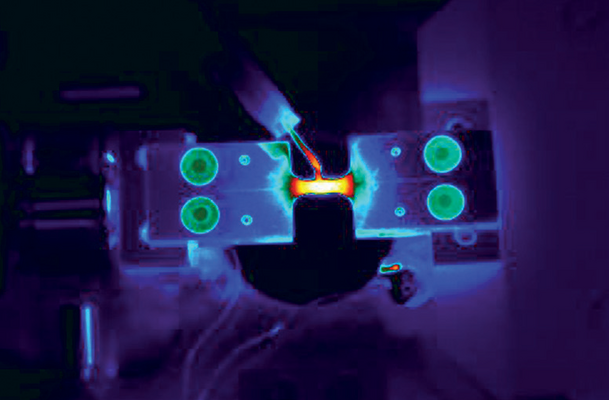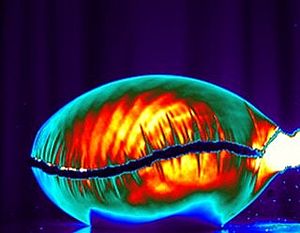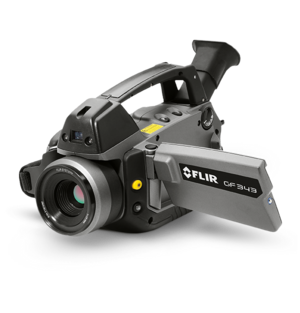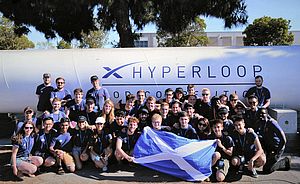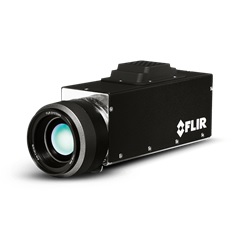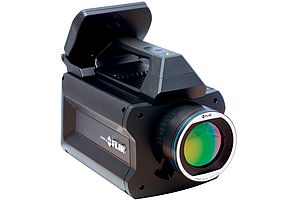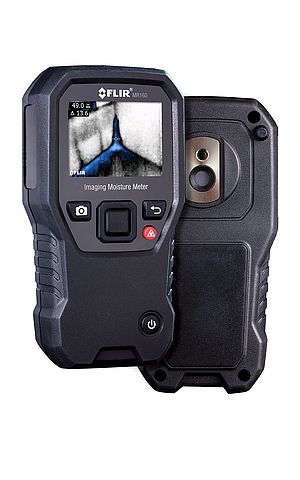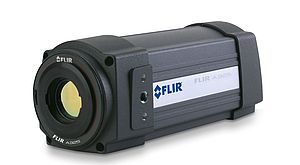In general, there are two types of thermal infrared cameras in use today. These are high performance cooled photon-counting cameras and low cost uncooled microbolometer-based cameras. The majority of thermographic cooled cameras on the market today use a detector made from Indium Antimonide (InSb). Cooled cameras work by counting the photons of energy in a specific waveband, typically the midwave IR band at around 3-5 μm.
The photons strike the pixels and are converted into electrons that are stored in an integration capacitor. The pixel is electronically shuttered by opening or shorting the integration capacitor. Typical integration times for -20°C to 350°C objects with a FLIR InSb camera range from about 6 ms to 50 μs depending on the camera model. These really short integration times make it possible to "stop motion" and make it possible to accurately measure very fast transients. Uncooled cameras are lower cost, smaller, lighter, and have lower power consumption than the aforementioned cooled counterparts.
The pixels of an uncooled camera are made from a material whose resistance changes significantly with temperature. The most common materials for this application are Vanadium Oxide or Amorphous Silicon. Thermal energy is focused on the pixel and the pixel physically heats up or cools down. Since the resistance of the pixel varies with temperature, its value can be measured and mapped back to the target temperature via a calibration process. Since the pixels have a finite mass, they have a thermal time constant.
Time constants for modern microbolometer-based cameras are generally between 8-12 ms. This doesn't mean that the pixel can be read out every 8-12 ms and provide an accurate answer! The rule of thumb for a first order system responding to step input is that it takes five time constants to reach steady state.
Time Constants And a Thought Experiment
A fun way to think about a microbolometer detector's time response is to pretend that you have two buckets of water. One bucket is full of well-stirred ice water at 0°C and the other is at a rapid boil at 100°C. Allow the microbolometer to stare at the ice water and then instantaneously switch to the boiling water (a 100°C step input) and plot the resulting temperature. If we convert the thermal time constant of 10 ms into a half time to make for easier math, we get something around 7 ms.
Here we see that the microbolometer reports 50°C at 7 ms or one half time, 75°C at two half times, 87.5°C at three half times, etc. What would happen if we tried to read out this microbolometer at the equivalent of 100 frames/sec or 10 ms? The camera would report back 63°C and have an error of 37°C. The camera would accurately report the temperature of the pixel, but the pixel would not have reached the temperature of the scene that it was looking. In general, it doesn't make sense to run microbolometers faster than about 30 frames/sec.
Real World Data
Let's take a look at a printing process that is required to heat a sheet of paper up to 60°C. The paper is coming out of rollers at 50 inches/second and must be uniform in temperature across both the width and length. Both a cooled photon counting camera and a microbolometer camera were used to capture side by side data. Figure 3 shows that the data from the two types of cameras look dramatically different. The data from the microbolometer shows a big, relatively steady bump in temperature along the length. The data from the photon counting camera shows significant variations in temperature over time.
The cooled camera shows that the heated roller assembly cooled down due to contact with the paper over the first revolution. The bang-bang controller sensed the temperature drop and turned the heater controller fully on again in response. As a result, the roller heated up until the set point was reached and then shut off and the process repeated. This one graph was enough to convince the R&D engineer of two things - a photon counting camera was required for testing the product and that a PID control system must be implemented on the heated roller instead of the simple bang-bang controller if the desired design objectives were to be met.



